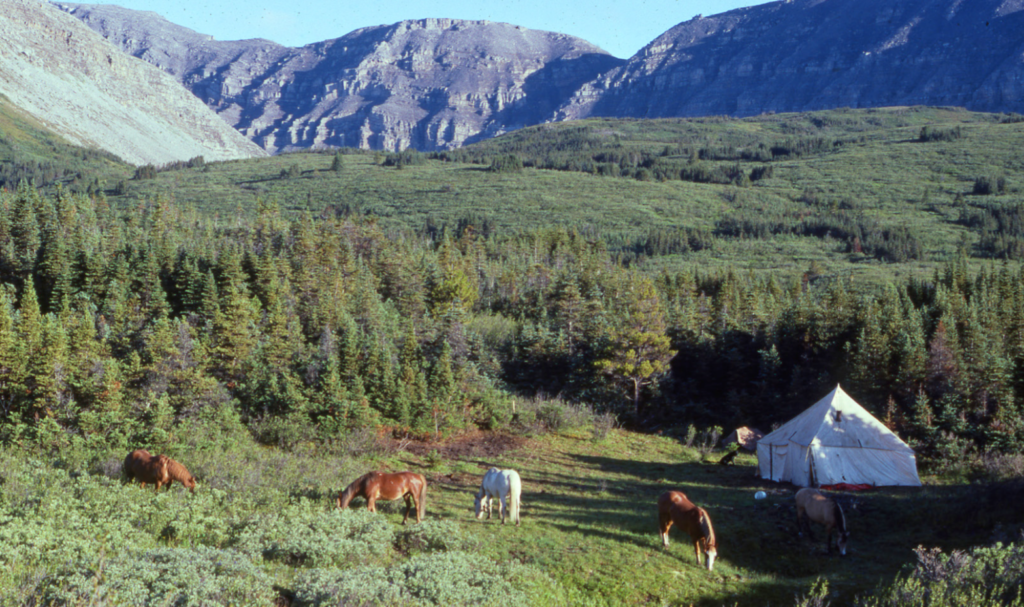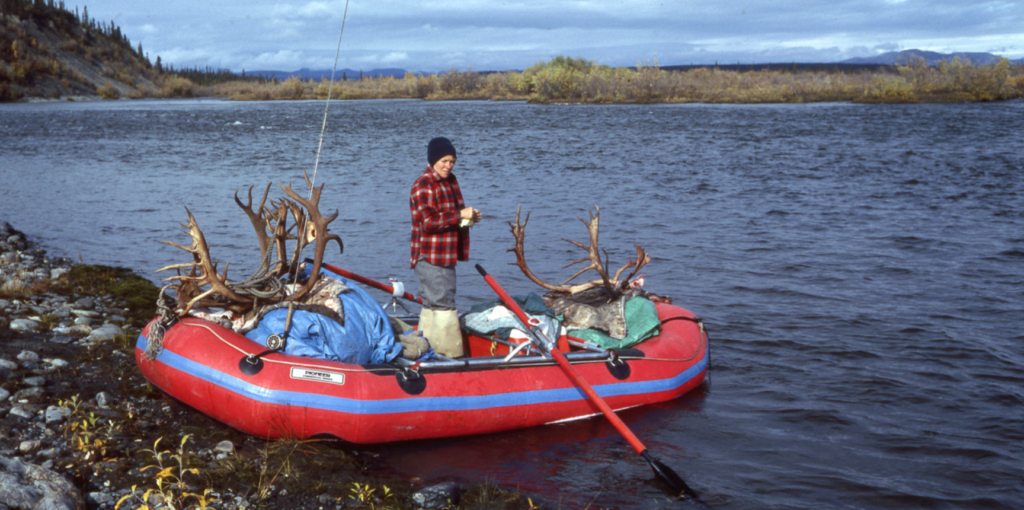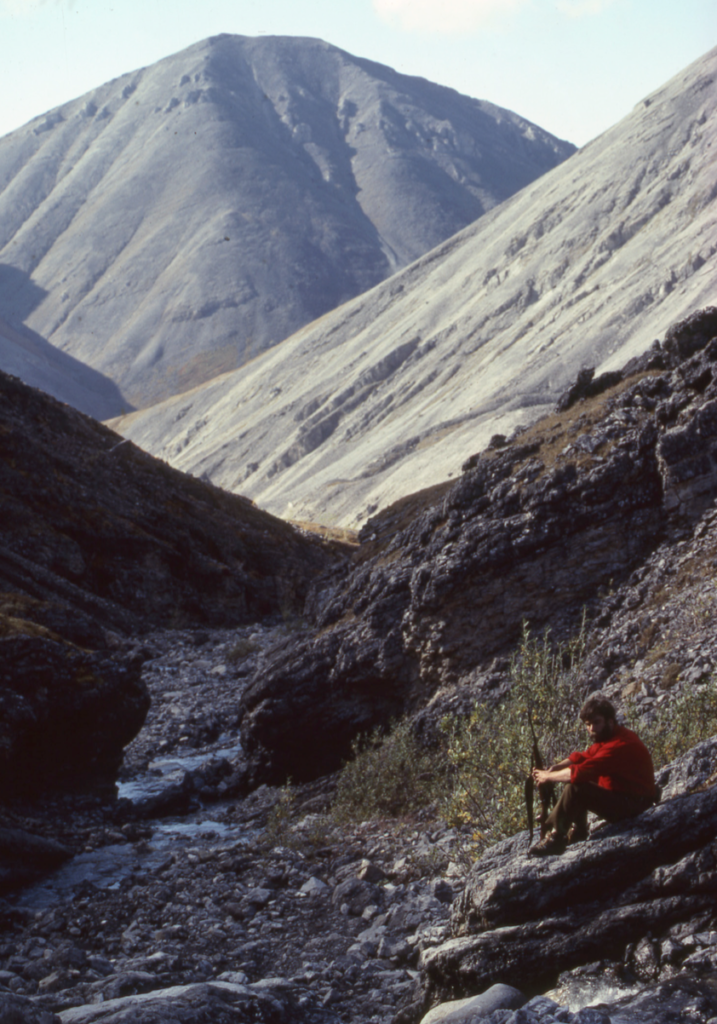Editor’s Note:
We’d like to thank our friends at the Wild Sheep Foundation for allowing us to re-publish this excellent piece from Walt Prothero’s regular column, Timberline Reflections, found in each issue of Wild Sheep Magazine. Walt’s writing is as thought provoking as it is entertaining and with 35 free-range, worldwide wild sheep and goats under his belt his experience speaks for itself. You can receive Wild Sheep Magazine by joining WSF at www.wildsheepfoundation.org.
What about those battery-powered quads?” the guy sitting across from me asks. We’re at the last high school reunion. Don’t ask me which one. “You can drive right up to the deer and blast it, they’re so quiet. How’s that fair?”
“I just wrote an article about hunting ethics,” I tell him, hoping to gain leverage in the looming discussion (I’m referring to “Hunt Ethics?” in the summer 2015 issue of Wild SheepTM, by the way). The guy isn’t an “Anti,” but he wants to know. He’s like the vast majority of non-hunters, on the fence about hunting and its existence, and he could go either way.
“And all that techno crap that doesn’t give the game a chance?” Seems he watches those late night techy hunt videos when he can’t sleep. He’s right, though. It’s tough half-defending something I don’t believe in, so I don’t. After another Chivas-on-the-rocks, fortunately, the talk degenerates into something less cerebral—Dixie’s sweaters in Miss Callahan’s civics class and Shorty puking his very first beer at the Brown Jug football game.
Over the past five years, I’ve had similar discussions in universities, at conventions, on hunting trips, and in bars on four continents—discussions on technology in hunting, that is, not Dixie’s sweaters. Those discussions involved hunters and even more non-hunters, and none involved Antis since they’re less rational than a presidential candidate or a stump. No reasonable person would waste breath on one.
My essay “Hunt Ethics?” also listed only nine commandments, and that’s an odd number. Moses knew enough to come down from the mount with an even ten. Some of my nine made reference to hunting technology and how it removes us from the act of hunting, but it left a gap in the document. So let’s get concrete here. Though shalt not use too much hunting technology! Now, we’ve got an even ten.
First, let’s defend human technological tendencies. Techno geeks evolved into their predispositions, and it started a million years ago when Homo erectus fire-hardened wooden points on staffs to more effectively slay big beasts and indulge their evolving meat passion, and it accelerated when modern humans appeared on the savannas of East Africa 200,000 years ago. Those that didn’t use the new projectile points disappeared; they spent too much time just surviving instead of passing on those genes that aimed them toward inventing and using new technology and thriving like their techno geek cousins—Darwin’s Natural Selection. But keep in mind we modern humans seldom hunt to survive, and that’s the critical difference.
I’m convinced fewer techno geeks exist in the WSF than elsewhere within the hunting brotherhood. Quads aren’t much use in the high peaks, I like to believe. Technology adds weight, too, and we don’t need more of it while clawing up the crags. Maybe I’m atypical, but I won’t own those robo riflescopes, don’t shoot any farther than necessary and slave to close the gap—indeed I shredded the knees of one of those four-figure, high-tech designer camo outfits a dealer made me a gift of on one of those stalks—and never used any laser and don’t own a range finder. I learned with an Enfield .303 war surplus bolt-action rifle at the advanced age of 13, eventually upgraded to a series of Winchesters and Remingtons and gave in to a riflescope (if Jack O’Connor did it, why not? Vision doesn’t improve with age, either.), and I toted a compact binocular and folding knife. Same today. So what I’m a Paleolithic relic, but I’ve got WSF and SCI pals that feel the same, in spite of scores of hunt magazines that look more like technology catalogs. After all, we don’t hunt to survive, and we won’t starve if we fail to score, either, so how much hunting technology do we need?
Trouble is, you can buy a Porsche for the cost of a sheep hunt. That’s not a fly in the ointment, it’s a dinosaur. Think Mongolia, for example, where Altai argali tags can exceed a hundred grand. Drawing out on a bighorn tag in a western state may take a lifetime—and how many octogenarians cavort the peaks? Auctions for high-end ram tags push half-a-million bucks, too, while most hunters choke at the bottom line of a probable once-in-a-lifetime Dall’s sheep shebang. If you slave thirty years for that ram tag or draw out on a bighorn ticket before they wheel you into the home, you’re going to take every advantage to make sure you put that ram in the salt. It’s human nature. And that includes technology overkill (I’m not perfect, either, and bought a $2000 binocular for my first desert bighorn shindig). I sympathize with the techno geeks, too, especially since I’m old enough to have bagged 20 or so world sheep over the decades when they were more affordable (heck, I bought a BC goat hunt for $350 in the ‘60s as a teenager, a Stone’s sheep hunt for $8100 and a BC bighorn for $9000 in the ‘80s, and sheep hunting pioneer Vance Corrigan spent $800 for an Alberta ram and stalked Mongolian argali back in the ’60s for a pittance!), so I’m not pointing fingers here. I’m commiserating, in my way. I’m also glad I did it when I wasn’t on the downside of the decades. I bemoan those missed opportunities, too—like the $3900 argali and ibex combo in Mongolia three decades ago; I backed out when they raised the price $500.
Of course we’re talking about sport hunting here, not subsistence hunting. Good info says “sport” came from the Spanish de porte, “in port,” referring to sailors in port with nothing to do but drink, gamble, whore—“sport.” Sport hunting isn’t obligatory, and was a way to get us back to a simpler and happier existence. Since modern man freed himself from the need to hunt to survive, hunting became a sport. As a result, he imposed more and more limitations on himself and his technology in the form of game laws and encumbrances to keep the hunter from become too superior. But new hunting toys are outpacing and weakening those imposed limitations, and game departments intent on pleasing everyone widen the gap (for example, Utah is moving muzzleloader scope magnification from a legal 1x to a higher magnification to satisfy techno-geek demand, I hear), and that gap between hunter and quarry continues to expand. Hunting is on the verge of becoming a push-button affair, like a virtual reality video game with real blood, unless we do something about it.
More and more, modern man hauls the trappings of work and civilization with him—smart phones and other electronica that keep him in constant contact with the travails he is presumably trying to escape; tents so weatherproof and comfy they’re like home; gourmet backpack food that weighs mere ounces and contains as much salt as a restaurant meal; ad nauseum. Again, this is human evolution, but we’ve gotten so efficient our technology nearly obliterates the hunt act itself and killing becomes the high point.
Our technology strives to make the total experience easier, to remove sodden boots, foggy rifle scopes, learning to judge distance; to invent absolutely weather-proof tents if we use them at all, to eliminate exertion at every level, to remove pack trips and to quickly get us back to the comforts of civilization without ever having truly left them. Too often, the only goal of a hunting trip is to nail another trophy on the wall. When I pin pals down on their latest hunt, they brag up trophy sizes—that 160-point ram, 60-inch argali, 180 buck—or how quickly they bagged the quarry, not about clinging to frozen scree, the sizzle of ram chops on spruce coals, blisters from those high-end boots, or playing match stick poker in the cook tent. The hunt act itself is something one must endure to get the trophy. How long before the hunt becomes only the kill, as it has already done in many high-fence hunts throughout the planet? What happened? I ask myself that question once a month, anyhow.
What can we do? I ask myself that question, too. Years ago I prohibited electronic technology in my university classes. Soon I got inundated, so I limited the use of electronics, and that didn’t work, either. Now my syllabi say technology may be used for classroom purposes only, but how am I to know? I’m still managing to prohibit electronics during exams, but what’s next—collecting smart watches as students walk into the classroom (yes, we professors know about those watches that give exam answers)?
Another example: On my last university study abroad trip to China, our chartered bus motored through a five-thousand-year-old scene—a verdant valley with peasants tilling rice paddies with water buffalo and wooden plows that hadn’t changed in millennium. Anything that happened on the trip could be part of the final exams for the upper division zoology, literature and writing classes they were getting credit for. As director of the shebang, I stood up to draw attention to the incredible scene. All but one student was engrossed in their mobile device. I thought, to hell with it. I chided them about it in our nightly class meeting, though, and questions about the scene showed up on the exams.
I sometimes escort hunters abroad, and earlier I refused to go if they toted mobile devices. After all, the hunt was mine, too, and I didn’t want it diluted. But as those devices became more universal, “my” hunters snuck off into the bush to use them.
On a Namibian elephant and croc safari eight years ago, we collected our Kung! Bushman trackers in dirt-floored, mud-and-wattle huts sans electricity, plumbing, or central heating. They both produced cell phones the moment I bagged the jumbo and within an hour 60 Natives also armed with cell phones misted out of thick bush and began hacking up the beast. It’s universal. Today, the bush telegraph is a mobile device. In the old days, mobile devices weren’t even a dream; you occupied yourself with what went on around you—hence, the “experience.”
“We just dial ‘em in, and we kill ‘em. That’s all.” The promoter and hunter bragged up a robo riflescope for his Mongolian sheep hunt video sponsor. In fairness, the fellow stalked and toted ram heads, but the quote too often epitomizes modern hunter attitudes. The guy was loaded down with technology—gadgets hanging from his cap bill, range finders at finger tips—neat toys, but those toys take attention away from what we’re paying for, the hunt act itself. Again, what happened?
Then we had the safari hunter whose angle was extreme range shooting. He produced the most professional videos I’d seen, owned a riveting personality, he gifted me his latest videos, and even I admit lusting after his long-range rifles. Trouble was, the emphasis was on technology and what you could do with it, not on hunting—he killed beasts that had no inkling they were hunted 500 yards away. That’s not hunting, it’s technology.
I just thumbed through a 160-page hunting magazine. Technology ads or articles owned 49 of those pages, and that’s typical. There’s gadgets that enhance our hearing so we can sense noises humans never could; they’ve got up to eight channels and a dozen digital bands. Scratch one more game animal advantage—stealth. There’s a binocular with a, “…super-light polycarbonate frame,…,” multi-coated lenses, and “center-click diopter adjustments.” Not to mention that it’s, “…nitrogen-purged, fog proof and 100% waterproof.” And a riflescope with brightness settings, LED reticle illumination, adjustable windage and elevation controls. I see a long range shooting “system,” too, that calculates windage and bullet drop based upon muzzle velocity, sight height and zero range; the ad is fond of acronyms—MOA, MRAD, BDC. The system even makes adjustments for altitude and ambient temperature. These selections were random, honest, and two score more pages of them exist in that magazine.
Humans evolved to invent and use technology, originally to make it easier and safer to bag big and dangerous beasts. It’s in our genes. But with that first crude spear, man began a thing human evolutionists call cultural evolution, which now has inundated organic evolution or Darwinism. It led us from those first crude hunting tools to modern technology humans even half a century ago couldn’t fathom. It also led us to printing, languages, sanitation, nutrition, and to medicine, religion, art, philosophy and ethics. If civilization can produce the U. S. Constitution, The Arabian Nights, and antibiotics, we can control our over indulgences in hunting, especially those involved with technology. We shouldn’t eliminate technology or its development, and we couldn’t even if we should. But we must control its use in hunting because nearly all of it insulates us from the hunt act itself. Today, some sports don’t hunt, they “collect.” If we don’t control ourselves, hunting will be better named “killing.” If we won’t control ourselves, what will the billions of fence-sitters decide? One way or another, the majority will rule.
I’ve got my fingers crossed.
About The Author:
Walt Prothero has been lucky enough to hunt 35 free-range, endemic wild sheep or goats worldwide and is a member of the faculty at Weber State University where he teaches Zoology and English. A prolific writer, he has written eight books, seven of them on hunting, and written as a Field Editor for the likes of Wild Sheep magazine, Field & Stream, Outdoor Life, and Sports Afield. You can read his phenomenal column, Timberline Reflections, in each issue of Wild Sheep magazine.





